Nutritionist Reveals 8 Simple Food Swaps That Actually Burn Fat
Are you ready to overhaul your diet? In a new viral video for MyProtein, Jamie Wright, MSC, BSC, accredited nutritionist, who specializes "in helping people all across the world achieve their goals without any silly fad diets," gives a lesson in food swaps. "Making simple food swaps can have a significant beneficial impact on our overall health and our wellbeing. It can also be a really simple way of achieving your weight loss goals by creating a calorie deficit without necessarily having to start tracking everything you eat or having to do those extreme diets that cut out whole food groups or even macronutrients," he says, going on to "explore some simple food swaps that can help you achieve your weight loss goals while also feeling physically and mentally healthier by changing some of the less nutritious foods in your diet."
How Can Food Swaps Benefit Your Health?
"When it comes to making healthy food swaps, it's important to understand what they are and how they can benefit your overall health," Wright explains in his post. "Healthy food swaps involve replacing unhealthy ingredients or food choices with healthier alternatives. Another way of looking at it is that by making these swaps, you are lowering your intake of processed and less healthy ingredients while increasing your consumption of nutrient-dense foods that are more beneficial to your health." He adds that making these swaps helps give your body "the essential nutrients, vitamins, and minerals it needs for optimal health" and "can also allow you to reduce your calorie intake without necessarily feeling deprived," he says. "By choosing healthier alternatives, you can still enjoy your diet while consuming your calories. This is particularly beneficial if you're looking to lose weight or maintain a calorie deficit."
What Is a Calorie Deficit?
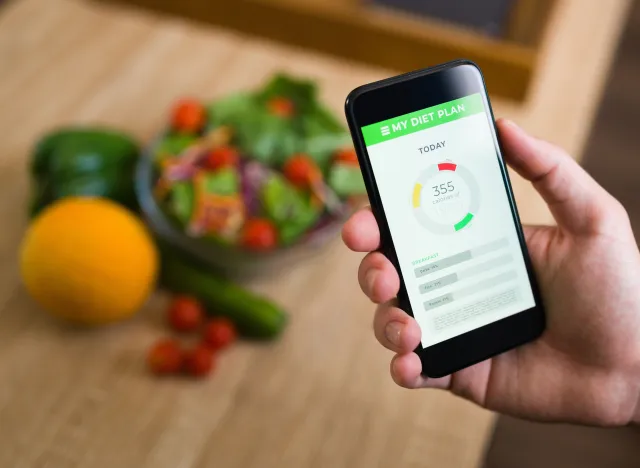
"Just what is a calorie deficit? I've mentioned the term a few times, but understanding what a calorie deficit is can be life-changing for those who may be struggling or have struggled with weight loss and weight loss maintenance in the past," he says. "A calorie deficit is simply when you consume fewer calories than your body needs to maintain its current weight. In other words, you're creating an energy imbalance by consuming fewer calories than you're expanding or burning. This prompts your body to tap into its existing storage for energy, which ideally is going to be body fat, ultimately leading to weight and fat loss." He also maintains that a calorie deficit "is a requirement" for weight loss. "This is not my opinion, and it's more of a universal truth. Anyone arguing otherwise is following some kind of diet that has simply created a calorie deficit. And to be honest, that's essentially what all weight loss diets are, no matter what way you package it. Any effective weight loss diet is heading toward the same destination: a calorie deficit. So creating a calorie deficit is essential for weight loss as it forces your body to burn stored fat for energy."
You Need to Maintain a "Healthy, Practical Calorie Deficit"
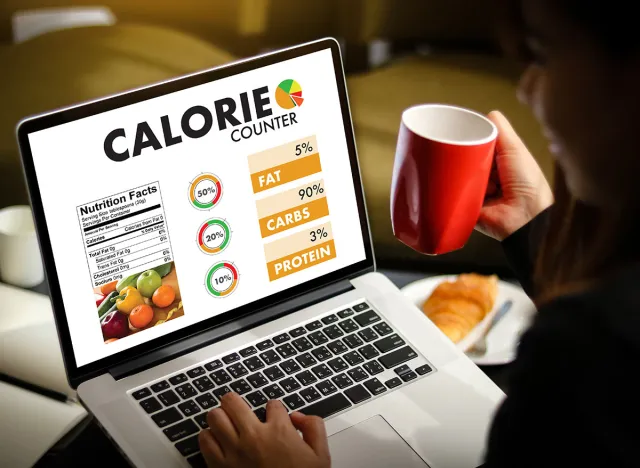
It's important to maintain a healthy, practical calorie deficit and not drastically reduce your calorie intake "as this can lead to a whole host of nasty consequences, including malnutrition, disordered eating, binge eating, rapid metabolic adaptation, loss of menstrual cycle, and a significant decline in exercise performance and recovery name just a few," he says. "The Academy of Nutrition and Dietetics has stated that a safe and sustainable daily calorie deficit is typically around 500 calories per day, but bear in mind that even this depends on your individual needs, goals, and circumstances."
Swap Number One: Ditch Sugary Drinks for Zero Calorie Alternatives

"One of the easiest swaps to make is by reducing the amount of sugar-sweetened drinks in a person's diet. These would include the likes of sugar-sweetened fizzy drinks, fruit juices, many commercially available smoothies, flavored milk, and other drinks with added sugar," he says. "Drop the sugar-sweetened fizzy drinks for the zero-calorie alternatives. You may want to drop the fizzy drinks altogether for diluting juice or water," he says, suggesting that you "ease yourself into having mostly water by first trying diluting juice and or flavored water options."
Swap Number Two: Ditch Store-Bought Smoothies for Homemade Ones
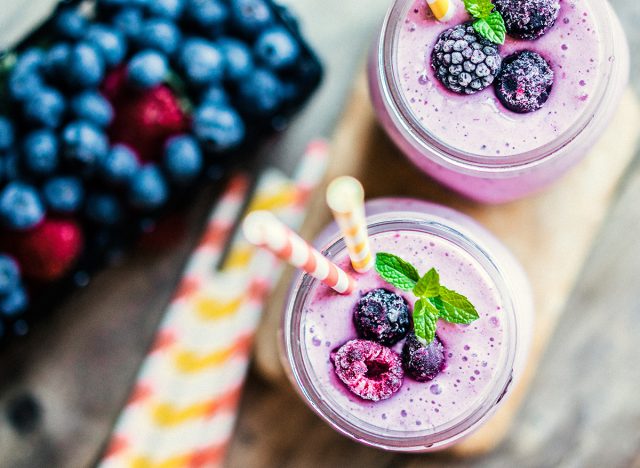
"I'd also recommend avoiding store-bought smoothies where possible," he says. "Homemade ones tend to be fine, but the ones you can buy in shops are often jam-packed with added sugars.
Swap Number Three: Ditch Chocolate Bars and Crisps for Protein Bars and Other Protein Snacks
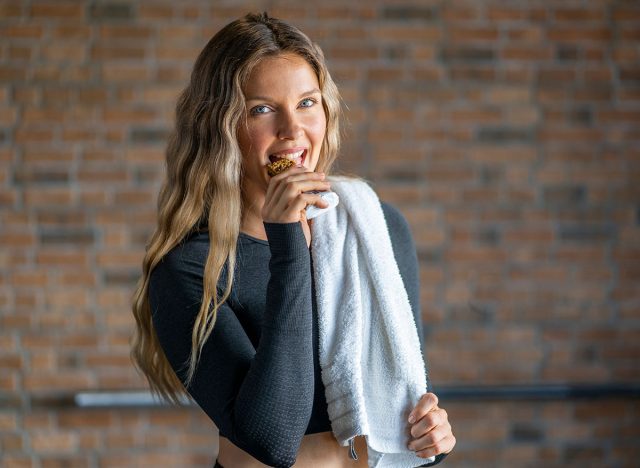
"Try swapping out the chocolate bars and crisps for high protein alternatives like protein bars and other rich protein snacks, and even include a few more high protein yogurt and dairy products in your diet too," he continues. "You might also want to consider the likes of lean meat, jerkies, and boiled eggs, although they can be a bit smelly. The old protein shake, edamame beans, and roasted chickpeas are some other examples that you can pick up on the go in almost any shop."
Swap Number Four: Ditch Refined Grains for Whole Grains
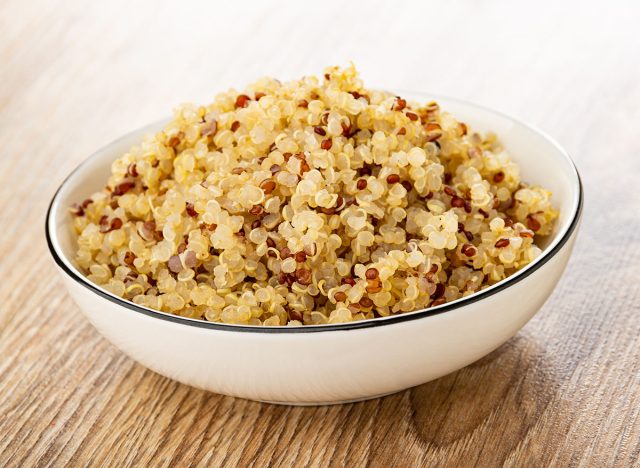
"Choose whole grains over refined grains," he continues. "You want to choose whole wheat bread, brown rice, quinoa, and whole grain pasta instead of their refined counterparts alongside more protein-rich snacks. It would also be good to add in more plant-based options, too."
RELATED: 8 Tips to Make Losing Weight Feel Effortless, From Proven Experts
Swap Number Five: Ditch Processed Meats for Lean Proteins
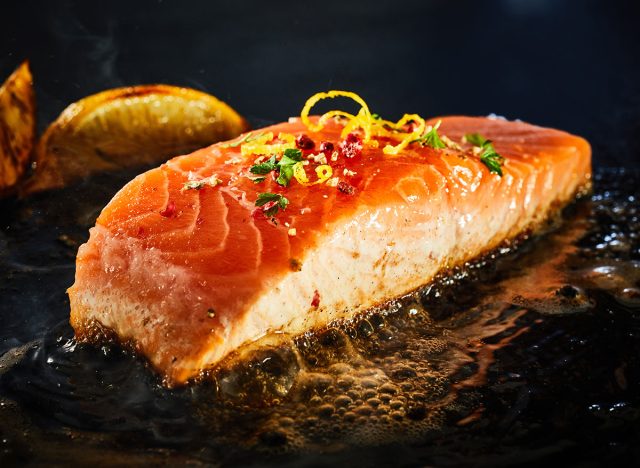
Next, ppt for lean proteins like chicken, Turkey, fish, tofu, or legumes. Ditch processed meats like sausages and hot dogs.
Swap Number Six: Ditch Unhealthy Snacks for Nuts
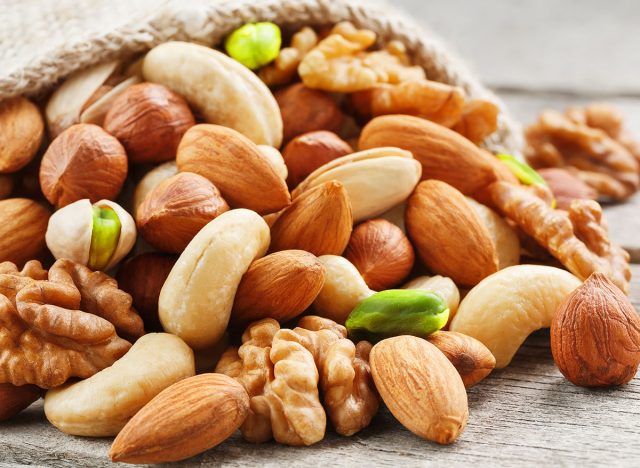
Do you tend to snack on junk and processed foods that offer no nutritional value? "You can also try snacking on nuts, seeds, and or dried fruits with no added sugar," he says.
Swap Number Seven: Ditch Sugary Yogurt for Greek Yogurt with Fruit

Instead of sugary sweets, like flavored yogurt loaded with sugar, choose plain Greek yogurt and other high-protein yogurt options and add your own fresh fruits or a small drizzle of honey. You can also "satisfy your sweet tooth with hydrating fruits like watermelon, cantaloupe, and berries," he says.
RELATED: Woman Lost 42 Pounds With These 7 Simple Protein-Rich Recipes
Swap Number Eight: Ditch Fried Food for Baked, Grilled, and Roasted Versions
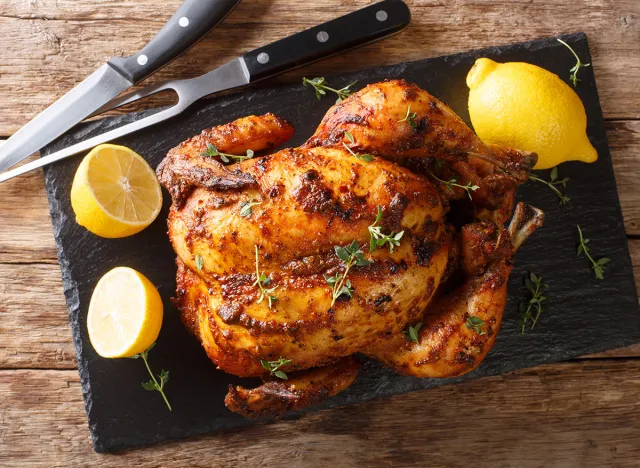
If you fry your food, you are making a mistake. "Instead of deep-fried options, opt for baked, grilled, and or roasted versions of foods like chicken, potatoes, and veggies," he says. Using an air fryer can make cooking healthy food easy.
Tip One: Start Gradually

He also offers some tips "to help you make the transition and stick to your new healthy food swaps," he says. "Most important of all, start gradually. Instead of completely overhauling your diet overnight, start by making some small changes. For example, swap one unhealthy snack a day with a healthier alternative and gradually increase the number of healthy food swaps over time. This approach allows your taste buds and habits to adapt to the new choices."
Tip Two: Experiment with New Recipes

Tip two? Try experimenting with recipes. "You can explore new recipes that incorporate healthy food swaps. There are countless resources online that provide delicious, nutritious alternatives to your favorite dishes."
RELATED: Doctor Reveals 4 Foods That Trick Your Body Into Losing Weight Like Ozempic
Tip Three: Be Mindful of Portion Sizes
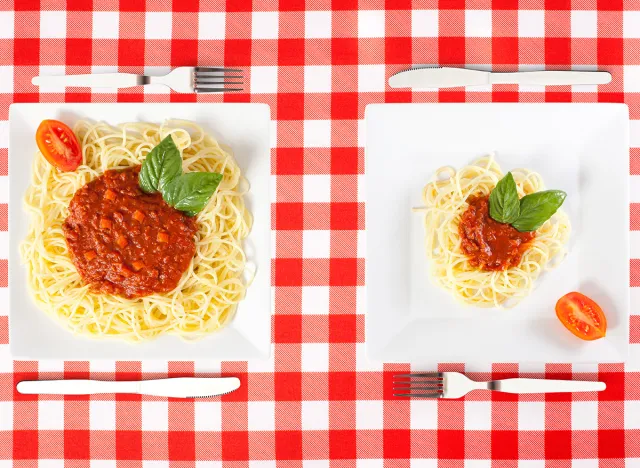
Another helpful tip? Be mindful of portion sizes. "While healthy food swaps can support weight loss, portion control is still essential. Even nutrient-dense foods can contribute to weight gain if consumed in excessive quantities. Pay attention to portion sizes and listen to your body's hunger and fullness cues. If you're not sure about portion sizes, you can always default to our guide. Aim for a palm-sized portion of protein per meal and an equally sized serving of fruit and or veggie. Go for a clenched fist-sized portion of grains or other nutritious carbohydrate sources."
Tip Four: Stick to a Thumb Size Portion of Fats
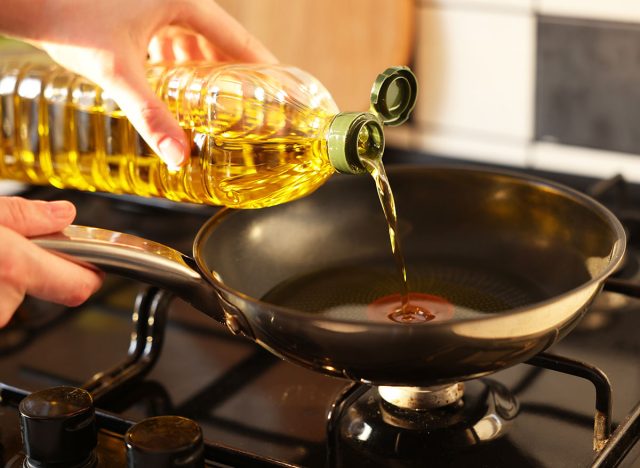
"Finally, stick to a thumb-sized portion of fats," he says. "This isn't to say that there's anything wrong with fats. In fact, fats are plenty good for our health, but they are the most energy dense of the macronutrients, and so keeping them in check makes maintaining a healthy weight easier for most people." And if you enjoyed this article, take advantage of these 15 Quick Ways to Lose Body Fat Percentage in a Week.





